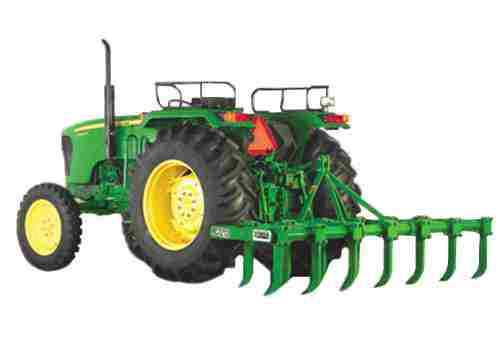What are Cultivator Types, Prices in India, and Uses in 2023
Cultivators are typically pulled behind a tractor or other power source, and they consist of a frame with a series of metal tines or discs that are attached to the frame. As the cultivator is pulled through the soil, the tines or discs break up the soil and mix it with air, which helps to improve the drainage and aeration of the soil. Cultivators can also be used to remove weeds by uprooting them or burying their leaves.
There are many different types of cultivators available, each with its own specific purpose. Some of the most common types of cultivators include:
- Row crop cultivators - These cultivators are designed to be used in rows of crops, such as corn or soybeans. They have a narrow width that allows them to fit between the rows of crops, and they have tines or discs that are specifically designed to disturb the soil without damaging the crops.
- Broad-area cultivators - These cultivators are designed to be used over a wider area, such as a field or garden. They have a wider width and more tines or discs than row crop cultivators, and they are typically used to prepare the soil for planting or to control weeds.
- Subsoilers - These cultivators are designed to break up the subsoil, which is the layer of soil that lies below the topsoil. Subsoilers have long, sharp tines that are able to penetrate the subsoil and break it up. This helps to improve drainage and aeration of the subsoil, which can benefit the growth of crops.
Cultivators are an important tool for farmers. They can be used to prepare the soil for planting, to control weeds, and to improve the drainage and aeration of the soil. Cultivators can help to improve the health and productivity of crops, and they can make it easier for farmers and gardeners to grow their own food.
Here are some of the benefits of using a cultivator:
- Improved soil aeration and drainage
- Reduced weed growth
- Increased crop yields
- Easier to plant and harvest crops
- Reduced soil erosion
- Improved soil health
If you are a farmer, a cultivator is a valuable tool that can help you to improve the quality of your soil and the productivity of your crops.
Cultivators are farm implements that are used to prepare the soil for planting, control weeds, and aerate and loosen the soil after the crop has begun to grow. Cultivators typically have the following features:
- Frame: The frame is the main important structure of the cultivator. It is typically made of steel or aluminum, and it is designed to support the weight of the cultivator and the tines or discs.
- Tines or discs: The tines or discs are the working parts of the cultivator. They are attached to the frame and are used to break up the soil and mix it with air. Tines are typically used for row crops, while discs are typically used for broad-area cultivation.
- Depth control: Cultivators typically have a depth control mechanism that allows the user to adjust the depth of the tines or discs. This is important for ensuring that the soil is not disturbed too much, which can damage the crops.
- Width: Cultivators come in a variety of widths. The width of the cultivator will determine the amount of soil that can be cultivated in a single pass.
- Power source: Cultivators can be powered by a tractor, a gasoline engine, or an electric motor. The power source will determine the size and weight of the cultivator that can be used.
Cultivators are an important tool for farmers and gardeners. They can be used to prepare the soil for planting, control weeds, and improve the drainage and aeration of the soil. Cultivators can help to improve the health and productivity of crops, and they can make it easier for farmers and gardeners to grow their own food.
To Get more information on tractor prices, tractor videos, and So on visit khetigaadi.com.



Comments
Post a Comment